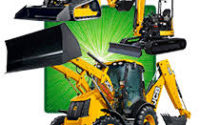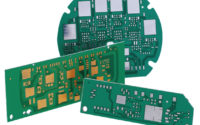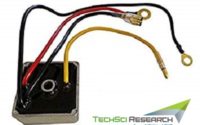Mercedes Benz Leading Customer Satisfaction in European Bus Market
In 2021, the user penetration in European buses is approximately 10.2% and is expected to reach 10.4% by 2025. In an aided-brand recall, Mercedes-Benz proved to be the most popular bus brand in Europe. The premium bus brand also accounted for the highest brand satisfaction among other brands, with a satisfaction level of 7.23 on a scale of 1-10. Low-accidental rates, exemplary safety features, advanced technology, and a comfortable riding experience makes Mercedes Benz a preferable option for riders in Europe.
Leading the passenger transport sector for decades, Mercedes-Benz buses exhibit class and performance with every model in terms of operating profile and technology. The premium brand buses offer spacious cockpits, clearly arranged seating positions and deep drawn windows for an enhanced riding experience. Whereas, the intelligently conceived mirror system, dynamic yet comfortable configured suspension systems, easily metered but powerful brakes, smooth-running high-torque engines, and convenient joystick gearshifts, etc., make the vehicle driver-oriented.
Mercedes-Benz Buses-No.1 Choice of Customers in Europe
eCitaro
The new Mercedes Benz eCitaro takes mobility to the next level with its high energy-efficient engine and innovative thermal management system. The interior of the model stands out with the coffered design ceiling above the center aisle and sweeping roof-edge flaps. The new air circulation system lowers the already low interior noise, which increases convenience for the passengers. The temperature inside the bus can be adjusted as per the requirement to ensure ultimate comfort to the passengers in a short time. Daimler provides flexibility to customize the bus with an optional addition of battery modules to the roof. The bus is ideal for heavily frequented towns and cities with a large number of passengers. By 2022, the range of eCitaro will be further increased with the support of a fuel cell as a range extender.

Citaro Hybrid
Offering incredible economy, user-friendliness, practicality, and innovation, Citaro hybrid emerged as the “Bus of the Year 2019” in the Bus Euro test in Zagreb with top ratings from an international jury of experts. Featuring the new hybrid technology, the bus provides the choice of either a diesel or petrol engine for all models. The combustion engines enhance efficiency while the “intelligent eco” electro-hydraulic steering reduces fuel consumption by 8.5%. In addition to the benefits, the Citaro hybrid is reasonably priced and meets high environmental standards while reducing the burden on the engine and improving the vehicle’s start-off characteristics. Citaro hybrid with diesel engine provides enough space for 105 passengers with no restrictions on journey profiles or range. All the bus components are designed to last for the duration of the vehicle’s service life, i.e., approximately 12 years.
Tourismo
An absolute stunner and volume leader among Europe’s touring coaches, Tourismo is a true Europe champion. Designed with the clear strategy of “one for all”, the buses are economical, convenient, and safe. Technologically sophisticated Tourismo features luxury head restraints, special equipment for long-distance bus service, infotainment with the latest WLAN technology as well as ABES advanced braking system, which make the bus an ideal solution for long-distance travel. The new models of Tourismo consist of a traveling hotspot with an internet connection. Tourismo can be used as above all high deck touring coach, club coach, down-to-earth interurban, and excursion coach, which makes the vehicle a popular choice for transporting teams, music corps to concerts, etc. Besides, the passengers have a headroom of 2010 mm in the center aisle to accommodate the tall people. The driver has a spacious and user-friendly cockpit, which offers a pleasant workspace with fully ergonomic controls and an informative display.

The Sprinter minibuses
The sprinter minibuses have been developed for urban, rural, and touring-coach services with restricted mobility. The current line-up of sprinter minibuses accompanies buses ranging in length from 5.9 meters to 8.7 meters and weight ranging from 3.5-6.8 tons. The low-floor models are tailor-made to facilitate local transport and make the riding as convenient as possible for passengers. The minibus features an extremely attractive look, inviting interior, and high level of comfort to meet practically any demand arising in compact buses. The highly maneuvrable minibus has large, parallelogram-shaped flush-mounted window seats, which demonstrates the strong and stylish character of the bus. The largest minibus model, the Sprinter Transfer 55, is equipped with an integral luggage compartment flap that underlines its practical utility. Passengers have the flexibility to enter the vehicle via a sliding door through an enlarged access point. The seats are 42-cm wide and contoured to provide excellent seating comfort along with standard two-point seat belts.
Mercedes Benz Self-Driving Future Bus
Mercedes unveiled its highly autonomous bus suitable to drive itself along suitable routes. The Future bus has the potential to communicate with traffic lights, cross junctions, and automatically stop at stations utilizing cameras, radars, and GPS systems. The bus has been tested in real-life traffic situations as the bus covered a 20-kilometer trip from Amsterdam’s Schiphol airport to nearby town, Haarlem. Not only the Future bus makes transportation more efficient and affordable, but also more productive and safer for the passengers. Leveraging automation in passenger buses can make the ride much quicker and comfortable for the bus operator, bus driver, and passengers due to enhanced punctuality and less involvement of human factors during bus operation. With an auto-brake system, the bus can easily recognize obstacles such as pedestrians crossing the roads or avoid collisions that can reduce future accidents.
The bus incorporates the CityPilot technology, a self-driving system previously used in the Mercedes Benz autonomous Actros truck. The passengers can confer the driving status of the bus with the lights indicated through the colored strips, where white indicates manual while blue shows automated. Besides, even the doors are illuminated to accelerate the boarding and embarking of passengers. The bus has been fragmented into three zones, service zone for the ones making short distance travels, middle zone for the ones planning to cover the extra mile and lounge zone located at the back for people traveling very long distances.

Buses Making Way towards Sustainability in Europe
In 2020, Mercedes Benz eCitaro, Iveco Crossway, and Futura HFD2 has been crowned with the Sustainable Bus Awards at Busworld in the categories ‘Urban’, ‘Intercity’, and ‘Coach’, respectively. All three buses are gas-powered, sustainable in terms of recyclability of components and environmental commitments. Mercedes-Benz eCitaro represents the best amalgamation of sustainability, comfort, and safety featuring lithium-ion batteries for a maximum capacity of 292 kWh that ensure a range of around 170 km in the city. Also, the bus features a completely flat interior floor, Electronic Stability Control, Sideguard Assist, Preventive Brake Assist while allowing top-level interior handline for providing easy access to disabled people. The Iveco Bus Crossway NP Low Entry is powered by a 360-horsepower natural gas engine, which reduces greenhouse gas emissions in suburban routes. The modern architecture of the bus gives an advantage to the passengers to have space in the luggage compartment, which is challenging to find in most intercity buses. Besides, the tanks integrated into the roof ensure high maneuvrability and distributed weight balance. The VDL Futura FHD2 has a frontal kneeling system that activates when speed extends 95 kmph while the Predictive Powertrain Control actively reduces collision by up to 20%, reduces fuel consumption by 5%, and cuts down carbon emission levels.
Conclusion
Increasing focus of government towards sustainability, electrification of public transport, and launch of new bus models are driving the sales of buses in European countries. Major players operating in the European bus market are increasing their brand awareness, price schemes, and product portfolio to stay competitive in the market and grab a larger share in the sector. Currently, the Netherlands is leading the electric buses market, followed by Sweden and France. However, the electric bus market is growing at the fastest rate in Germany, with rapid adoption of electric bus fleets in various cities such as Berlin, Cologne, Frankfurt, Hamburg, and Munich.



